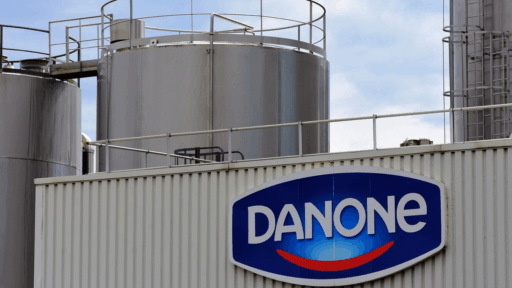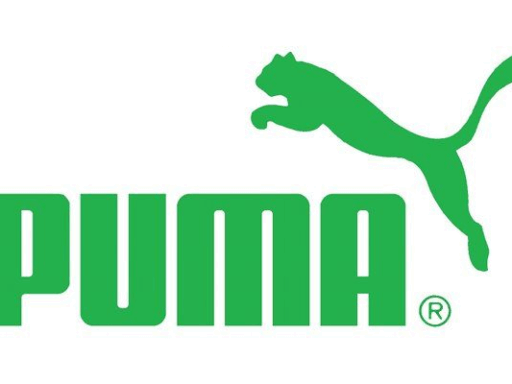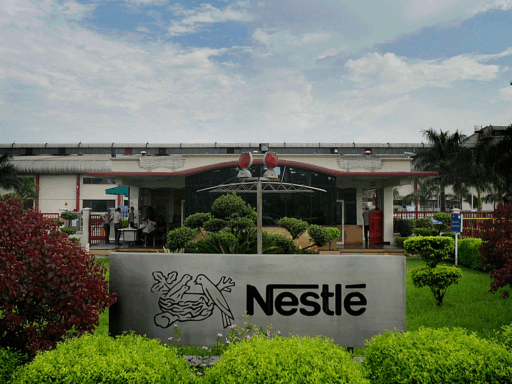Danone, a global leader in the food and beverage industry, has long been committed to integrating sustainability into its core operations. With a mission to “bring health through food to as many people as possible,” Danone’s sustainability strategy is deeply embedded in its business model. In 2023, the company introduced the Danone Impact Journey, a comprehensive roadmap structured around three pillars: Health, Nature, and People & Communities. This strategy reflects Danone’s dual commitment to economic performance and social responsibility, aligning with its status as a “Société à Mission” and a certified B Corporation.
Danone’s sustainability goals include achieving carbon neutrality by 2050, reducing water consumption, promoting circular packaging, and encouraging healthier and more sustainable lifestyles for its customers.
Sustainability Strategy and Goals
Danone’s sustainability strategy revolves around several key areas of focus, which are integrated across its operations and supply chain. These areas include climate change and carbon neutrality, renewable energy adoption, circular economy efforts, and social responsibility initiatives that involve both its workers and the communities it serves.
Climate Change and Carbon Neutrality
Danone has committed to achieving net-zero emissions across its full value chain by 2050. This includes reducing its Scope 1, 2, and 3 emissions, which encompass emissions from manufacturing, energy consumption, and the supply chain. As part of its Climate Transition Plan, Danone aims to meet 1.5°C science-based targets by 2030.
Key Initiatives:
- Renewable Energy Transition: Danone aims to significantly reduce its carbon footprint through renewable energy adoption. The company plans to transition its operations to 100% renewable energy by 2035. As of 2022, 68.5% of the company’s electricity was sourced from renewable energy.
- Methane Emission Reduction: In alignment with the Global Methane Pledge, Danone has committed to reducing methane emissions from its dairy supply chain by 30% by 2030.
- Sustainable Agriculture: Danone encourages its dairy farmers to adopt regenerative agricultural practices, focusing on reducing carbon emissions and promoting soil health to mitigate climate change impacts.
Renewable Energy and Energy Efficiency
Danone’s commitment to renewable energy is reflected in its global operations, with substantial investments in energy efficiency and renewable energy sources like solar, wind, and biomass.
Key Initiatives:
- Energy Efficiency: Danone’s Re-Fuel Danone program focuses on energy excellence across all its global operations, with a goal to increase energy efficiency by 30% by 2025.
- Global Renewable Energy Usage: The company aims to source 100% of its energy from renewable sources by 2030 and continues to invest in energy efficiency initiatives across its manufacturing plants.
Circular Economy and Packaging
A crucial aspect of Danone’s sustainability strategy is the transition to a circular economy for packaging. The company has pledged to make 100% of its packaging reusable, recyclable, or compostable by 2030.
Key Initiatives:
- Packaging Reduction: Danone is committed to reducing the use of virgin fossil-based plastic by 30% by 2030. It also focuses on increasing the use of recycled materials and designing products that can be fully recycled or composted.
- Plastic Recovery: Danone partners with various stakeholders to close the loop on plastic waste, ensuring that plastic packaging is reused and recycled efficiently, particularly through its involvement in the Ellen MacArthur Foundation’s New Plastics Economy initiative.
- Innovative Packaging: Danone is exploring innovative packaging solutions, such as biodegradable plastics and paper-based packaging, to reduce its environmental impact.
Water Stewardship
Water is a critical resource for Danone, and the company is actively involved in protecting water resources through effective water stewardship programs, particularly in water-stressed areas.
Key Initiatives:
- Water Use Reduction: Danone has set a goal to reduce its water usage by 15% by 2025 across its manufacturing operations.
- Watershed Management: The company is investing in watershed preservation and water management practices in high-risk regions to ensure sustainable water use for both its operations and surrounding communities.
- Regenerative Agriculture: Danone’s regenerative agriculture programs support sustainable water use on farms and encourage water-saving techniques such as rainwater harvesting and drip irrigation.
Key Sustainability Innovations and Technologies
Danone continues to invest in innovative technologies to enhance its sustainability efforts across its supply chain, manufacturing, and product offerings. These innovations aim to increase the efficiency of operations, reduce emissions, and provide consumers with more sustainable choices.
Renewable Energy Integration
- Solar and Wind Power: Danone has committed to incorporating more solar and wind energy into its manufacturing plants, including significant solar power projects at several of its facilities worldwide.
- Energy Efficiency Programs: Danone’s Re-Fuel Danone program, aimed at improving energy efficiency, supports the company’s goal of reducing its carbon footprint and transitioning to renewable energy.
Circular Packaging Innovations
- Recycled Materials: Danone is exploring alternative packaging materials, including recycled paper and bio-based plastics, as part of its commitment to circularity.
- Collaboration with Partners: Danone has joined several initiatives and partnerships that focus on increasing the recycling rates of its packaging materials and ensuring that the majority of its packaging is fully recyclable or compostable by 2030.
Water Stewardship Technologies
- Water Recycling Systems: In its manufacturing plants, Danone uses water recycling technologies to reduce freshwater consumption and improve water efficiency.
- Sustainable Farming Solutions: Danone’s investment in regenerative agriculture supports practices that protect water resources and reduce water usage on farms.
Measurable Impacts
Danone’s sustainability initiatives have already resulted in substantial measurable outcomes that highlight the company’s commitment to reducing its environmental footprint.
Emissions Reduction
- Carbon Emissions: Danone has reduced its Scope 1 and 2 emissions by 48.3% since 2015 and is on track to achieve net-zero emissions by 2050.
- Renewable Energy Usage: As of 2023, 68.5% of Danone’s electricity came from renewable sources, with plans to increase this to 100% by 2030.
Circular Economy Progress
- Plastic Recovery: Danone has committed to recovering 100% of the plastic packaging it uses by 2030, aiming to close the loop and significantly reduce plastic waste.
- Packaging Innovations: The company has already made significant progress in designing packaging that is recyclable, reusable, or compostable, with over 50% of its packaging already meeting these criteria.
Water Stewardship
- Water Use Reduction: Danone has decreased its water use by 10% across global manufacturing plants since 2018, saving approximately 3 million gallons of water annually.
- Watershed Programs: Danone has implemented watershed protection programs in water-stressed areas, with plans to further expand these efforts.
Challenges and Areas for Improvement
Despite its strong progress, Danone faces several challenges in its sustainability journey:
Supply Chain Emissions
A significant portion of Danone’s emissions falls under Scope 3, particularly from the agricultural supply chain. Managing these emissions will require continued collaboration with farmers, suppliers, and other stakeholders to ensure sustainable practices.
Packaging and Circularity
While Danone is on track to achieve 100% circular packaging by 2030, the challenges of scaling recycling infrastructure and consumer behavior remain obstacles in achieving this ambitious goal.
Water Scarcity
Water scarcity is a growing concern, particularly in regions where Danone operates. The company will need to continue investing in water stewardship programs and collaborate with local communities to protect and manage water resources effectively.
Competitor Comparison: Danone’s Sustainability Leadership
Danone’s sustainability initiatives set a high benchmark within the food and beverage industry, focusing on climate action, renewable energy, circular packaging, and water stewardship. To fully understand Danone’s standing in the market, it’s crucial to compare its sustainability efforts to its major competitors: Nestlé, Unilever, and PepsiCo. This comparison provides insights into where Danone leads and where it faces competition.
Danone vs Nestlé
Carbon Neutrality and Emissions Reduction
- Danone: As of 2023, Danone has committed to net-zero emissions across its full value chain by 2050, with science-based targets aligned to the 1.5°C pathway. It has reduced Scope 1 and 2 emissions by 48.3% since 2015 and is on track for further reductions.
- Nestlé: Nestlé has pledged to achieve net-zero emissions by 2050. However, it set an interim target of reducing Scope 1, 2, and 3 emissions by 20% by 2025. While similar in long-term goals, Nestlé’s near-term targets are less aggressive compared to Danone’s.
Circular Economy and Packaging
- Danone: Danone aims to have 100% recyclable, reusable, or compostable packaging by 2030. It is also working toward reducing the use of virgin fossil-based plastic by 30% by 2030 and 50% by 2040.
- Nestlé: Nestlé is also committed to 100% recyclable or reusable packaging by 2025 and has set a goal to reduce its plastic footprint by one-third by 2025. Nestlé has implemented “Nestlé for Healthier Kids” program focused on reducing sugar, salt, and artificial ingredients in food. However, its packaging reduction strategy lacks the same clarity on fossil-based plastics compared to Danone.
Renewable Energy Usage
- Danone: Danone has achieved 68.5% of its electricity usage from renewable sources in 2023, with plans to reach 100% renewable energy by 2030.
- Nestlé: Nestlé has a 100% renewable energy commitment for its global operations by 2025, earlier than Danone’s 2030 target. However, Nestlé’s global operations are more extensive, which makes reaching this target a challenging task.
Water Stewardship
- Danone: Water stewardship is a critical part of Danone’s sustainability strategy, with a focus on regenerative agriculture to reduce water consumption. It has implemented several watershed management programs in water-stressed areas.
- Nestlé: Nestlé has also placed significant emphasis on water sustainability, with a focus on water risk assessment and supporting local communities to improve access to clean water. However, Nestlé’s global water practices have faced criticism in the past, which has led to tighter scrutiny.
Danone vs Unilever
Carbon Neutrality and Emissions Reduction
- Danone: Committed to net-zero emissions by 2050 and has significantly reduced its operational emissions. It has also integrated regenerative agriculture practices to further lower carbon intensity from its supply chain.
- Unilever: Unilever has set net-zero emissions targets by 2039, which is later than Danone’s 2030 interim goals. Unilever is a leader in sustainable consumer goods and has successfully reduced Scope 1 and 2 emissions by 52% since 2008.
Circular Economy and Packaging
- Danone: Danone has committed to 100% circular packaging by 2030 and focuses on reducing plastic waste through innovative packaging solutions.
- Unilever: Unilever’s circular packaging strategy is also robust, with goals to make 100% of its plastic packaging recyclable, reusable, or compostable by 2025. Unilever has pledged to halve the amount of virgin plastic used in packaging by 2025, which aligns closely with Danone’s commitment to reducing fossil-based plastic.
Water Stewardship
- Danone: Danone’s water stewardship program includes local watershed restoration, rainwater harvesting, and water-efficient farming practices.
- Unilever: Unilever has focused its water programs primarily on improving access to clean water through partnerships and philanthropic efforts, complementing Danone’s more operationally focused initiatives.
Danone vs PepsiCo
Carbon Neutrality and Emissions Reduction
- Danone: Danone has set an aggressive target to achieve net-zero emissions by 2050 across its entire supply chain, focusing heavily on renewable energy and sustainable sourcing.
- PepsiCo: PepsiCo also targets net-zero emissions by 2040 but has a more aggressive interim goal of reducing Scope 1, 2, and 3 emissions by 30% by 2030. PepsiCo’s emissions reduction plans include using more renewable energy and promoting sustainable agriculture.
Circular Economy and Packaging
- Danone: Danone aims for 100% recyclable, reusable, or compostable packaging by 2030 and plans to reduce the use of virgin plastic by 30% by 2030.
- PepsiCo: PepsiCo has committed to making 100% of its packaging recyclable, compostable, or biodegradable by 2025. The company has also promised to reduce plastic waste by 35% by 2025.
Water Stewardship
- Danone: Danone places a strong focus on regenerative water management in its supply chain. The company has developed several water stewardship programs that help reduce water use, particularly in water-scarce regions.
- PepsiCo: PepsiCo is working on water replenishment programs and has committed to replenishing 100% of the water it uses in high-water-risk areas by 2030. It is also focusing on improving water efficiency across its supply chain.
Competitor Comparison Table
| Company | Carbon Neutrality Target | EV Investment | Renewable Energy Goal | Circular Packaging | Water Stewardship |
|---|---|---|---|---|---|
| Danone | 2050 | $50B (2022-2026) | 100% by 2030 | 100% recyclable by 2030 | Watershed programs, Regenerative agriculture |
| Nestlé | 2050 | $35B (2020-2025) | 100% by 2025 | 100% recyclable by 2025 | Water risk assessment, Community water access |
| Unilever | 2039 | $11B (sustainable sourcing) | 100% by 2025 | 100% recyclable by 2025 | Water access initiatives, Community engagement |
| PepsiCo | 2040 | $20B (battery tech) | 100% by 2030 | 100% recyclable by 2025 | Water replenishment by 2030 |
Future Plans and Long-Term Goals
Danone’s sustainability roadmap for the future includes:
- Achieving Carbon Neutrality by 2050: The company is committed to achieving net-zero emissions by 2050 across its full value chain, with interim goals aligned with a 1.5°C pathway.
- Increasing EV Production: By 2026, Danone plans to produce over 2 million EVs annually, significantly reducing emissions from its vehicles and supply chain.
- Circular Packaging: Danone aims for 100% recyclable, reusable, or compostable packaging by 2030, with ongoing innovation in sustainable materials.
- Water Stewardship: The company will continue to expand its water stewardship programs, particularly in water-stressed regions, and promote regenerative agricultural practices.
Danone’s comprehensive sustainability strategy positions it as a leader in driving environmental sustainability and social responsibility within the food and beverage industry. With ambitious goals in carbon neutrality, circular packaging, water stewardship, and renewable energy, Danone is setting a strong example for other companies in the sector. While challenges remain, the company’s commitment to integrating sustainability at every level of its operations ensures that it will continue to lead by example in the years to come.
Sources
- https://www.danone.com/sustainability.html
- https://www.danone.com/newsroom/press-releases/danone-announces-re-fuel-danone–a-global-energy-excellence-programme-to-drive-energy-efficiency–resilience-and-decarbonisation-journey.html
- https://www.danone.com/sustainability/nature/driving-climate-action.html
- https://www.danone.com/content/dam/corp/global/danonecom/medias/medias-en/2023/corporatepressreleases/pr-danone-methane.pdf
- https://www.danone.com/sustainability/nature/protecting-water-resources.html
- https://www.danone.com/sustainability/nature/protecting-water-resources.html
- https://www.danone.com/content/dam/corp/global/danonecom/investors/en-sustainability/en-policies/planet/water/danone-water-policy-2020.pdf






